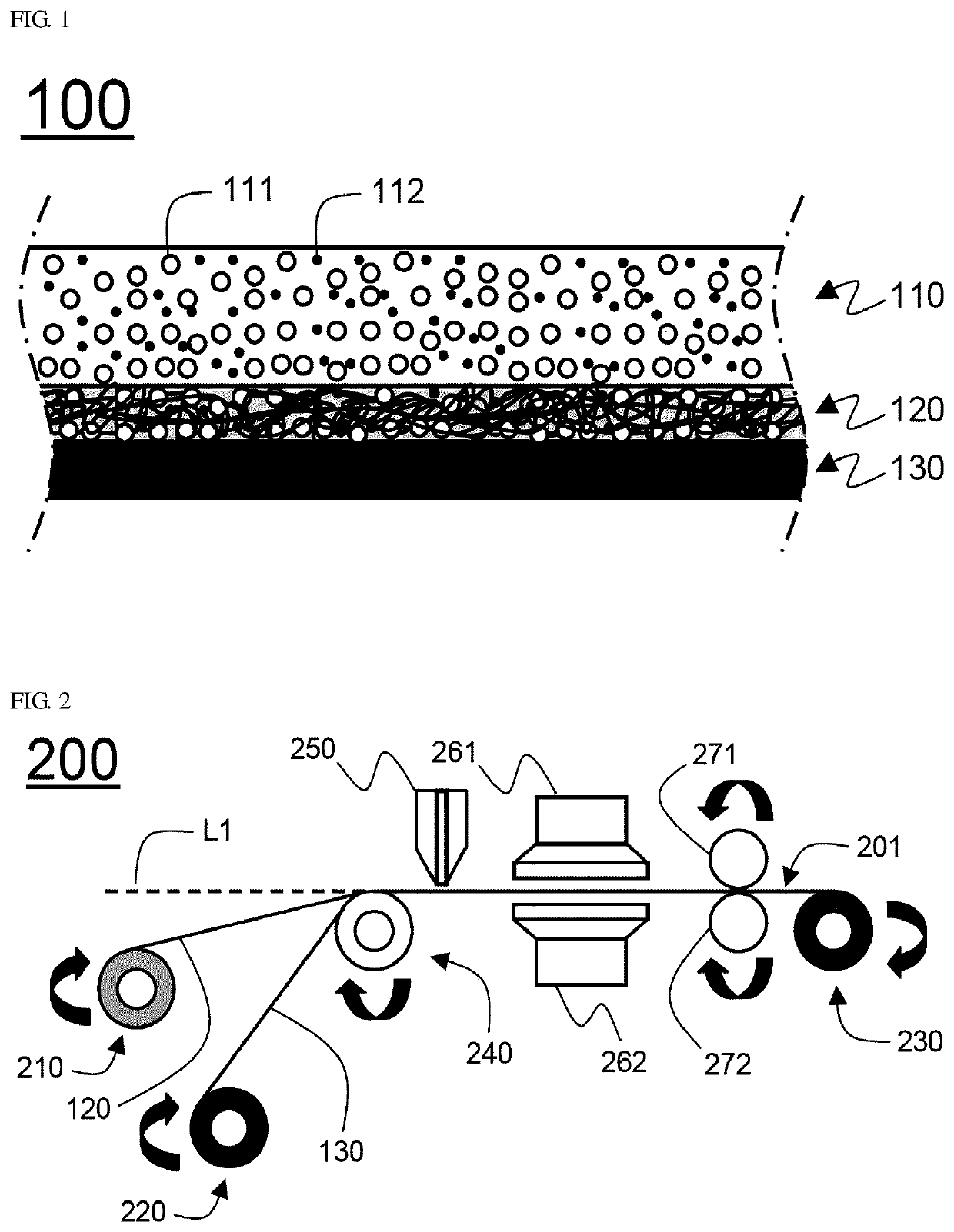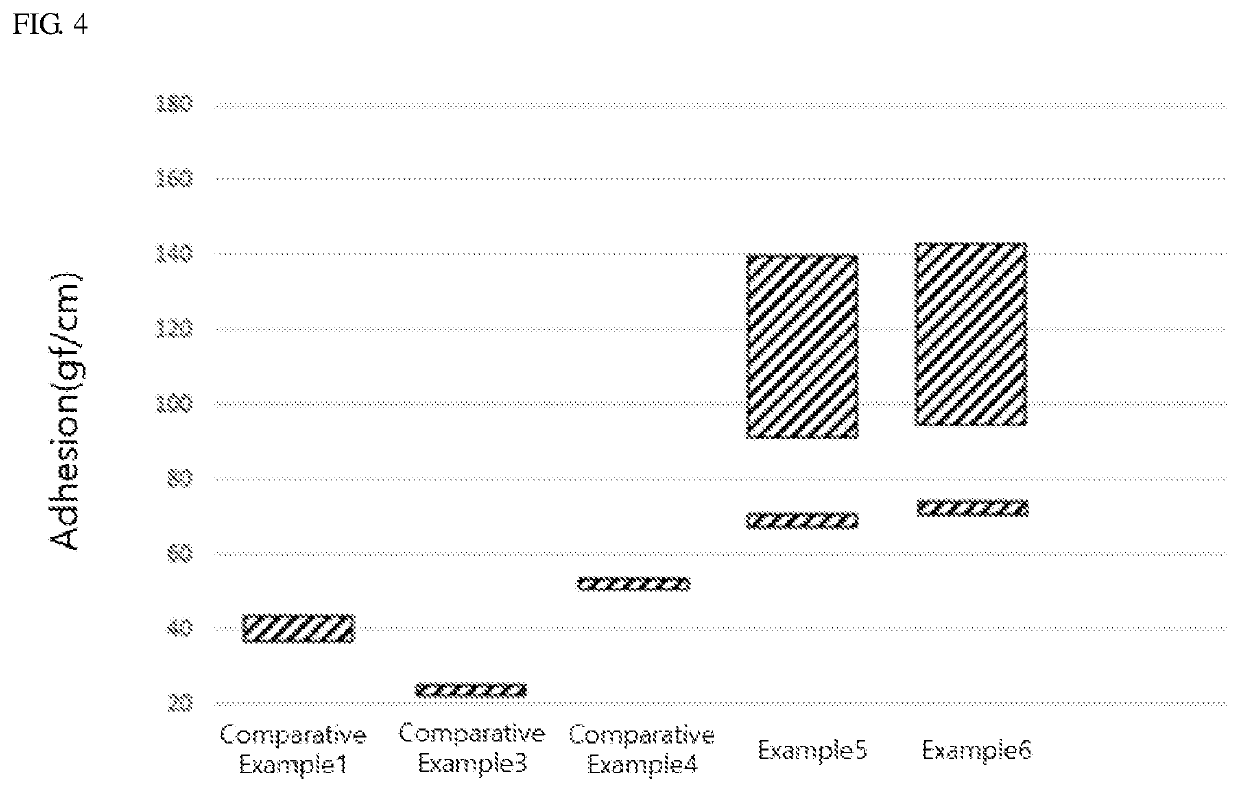Electrode for secondary battery including carbon nanotube sheet
a secondary battery and carbon nanotube technology, applied in the manufacture of cell components, electrode manufacturing processes, final product manufacturing, etc., can solve the problems of negative electrodes not being properly deintercalated, the electrode mixture layer fails to perform its function, and the charging and discharging capacity decreases as the cycle progresses, so as to improve the adhesion improve the adhesion, and improve the adhesion. effect of the electrode mixture layer
- Summary
- Abstract
- Description
- Claims
- Application Information
AI Technical Summary
Benefits of technology
Problems solved by technology
Method used
Image
Examples
example 1
[0079]A negative electrode mixture slurry was prepared by thoroughly mixing natural graphite as a negative electrode active material, a PVdF binder, and a natural graphite conductive material in NMP at a weight ratio of 90:4:6 (negative electrode active material:binder:conductive material). A 5 micrometer thick carbon nanotube sheet was placed on a 20 micrometer thick Cu foil so that the carbon nanotube sheet was completely adhered thereto. The negative electrode mixture slurry prepared above was applied thereto, dried, and rolled to prepare a negative electrode.
example 2
[0080]The same negative electrode as in Example 1 was prepared except that the thickness of the carbon nanotube sheet was 10 micrometers.
example 3
[0081]The same negative electrode as in Example 1 was prepared except that the thickness of the carbon nanotube sheet was 15 micrometers.
PUM
| Property | Measurement | Unit |
|---|---|---|
| thickness | aaaaa | aaaaa |
| porosity | aaaaa | aaaaa |
| thickness | aaaaa | aaaaa |
Abstract
Description
Claims
Application Information
 Login to View More
Login to View More - R&D
- Intellectual Property
- Life Sciences
- Materials
- Tech Scout
- Unparalleled Data Quality
- Higher Quality Content
- 60% Fewer Hallucinations
Browse by: Latest US Patents, China's latest patents, Technical Efficacy Thesaurus, Application Domain, Technology Topic, Popular Technical Reports.
© 2025 PatSnap. All rights reserved.Legal|Privacy policy|Modern Slavery Act Transparency Statement|Sitemap|About US| Contact US: help@patsnap.com



